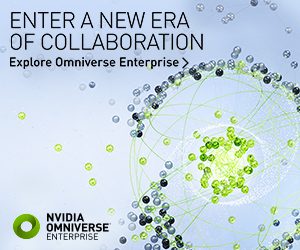Business resilience is often synonymous with business continuity. In times of crisis or disaster, leaders frequently think of business continuity as the ability to have their organization access their data, tools, and customers without taking any steps backward or having any interruptions. Nevertheless, business resilience expands far beyond that. It is the ability for companies to not only survive significant disruptions, but also to grow and always improve.
Before the pandemic, office efficiency and productivity manifested as open floor plans and interoffice technologies helped professionals tackle manual tasks and operational friction. But open floor plans and the occasional “working from a coffee shop” do not solve for efficiency, productivity and collaboration in a hybrid world. The operational friction has shifted. The blurred lines between in-person, virtual and distributed working require more sophisticated and robust solutions.
Can Your Employees Do Any Job from Anywhere?
As new work ways emerge and evolve, it will be less focused on health protocols, and instead help companies attract the best talent — wherever that person is located — and usher in ways for design, collaboration and simulation. Enterprises will build teams that operate beyond borders, not just beyond offices.
Certain roles in every organization and business ecosystem have higher technology requirements than others. Inexpensive laptops combined with collaboration tools and conferencing platforms have made it relatively easy for workers to transition to remote work at the start of the pandemic. But as we enter into this new flexible work paradigm, the laptops, workstations, servers, and virtual machines used by architecture, engineering, construction and operations (AECO), media and entertainment, and product development professionals need to be upleveled. More advanced platforms with cutting-edge performance are required to solve dispersed collaboration for graphics intensive workloads.
When your business works to include efficiency and resilience in its plans and processes, you enable your teams to innovate and adapt on the fly. Arming these roles with powerful technology opens new doors for enterprises, provides competitive advantages, and furthermore, creates business resilience.
Consider how much faster businesses can close deals and move projects forward when:
- An architect can walk a client through an atrium with a 100-foot ceiling right in the client’s office with the help of virtual reality technology.
- A video artist can show photorealistic renderings on location almost instantaneously, without waiting through painfully long render times.
- Employees better understand customer feedback because they are in a virtual experience together, visualizing concepts or designs in real time.
- Changes and edits to product or building designs are made instantly because the technology is at hand, not back in an office.
Focusing solely on efficiency can overlook these advantages in favor of lower costs. But there is an advanced technology that brings powerful computing, virtual experiences, and AI to your employees, customers, and job sites — all for a fraction of the salaries your business typically pays for people in these roles.
NVIDIA RTXTM is a visual computing platform designed for the complex needs of professionals with roles in architecture, media and entertainment, manufacturing, scientific visualization, and more. While the GPU provides the power for visual computing in workstations, laptops and virtual machines, the real value NVIDIA provides is in its RTX professional platform ecosystem.
NVIDIA’s RTX ecosystem includes hardware and software partners, as well as application and framework providers. Thanks to this ecosystem, the professionals in your organization that need powerful visual computing platforms can choose their OEM provider and the software tools they need for their workflow.. Your employees bring their expertise in their chosen field and their ideas. NVIDIA RTX and its ecosystem of partners provide the tools they need to bring the ideas to life.
To help employees in roles with complex technology needs, NVIDIA Omniverse™ is an extensible, open platform built for virtual collaboration and real-time physically accurate simulation. It allows an organization’s creators, designers, researchers, and engineers to connect design tools, assets, and projects to collaborate in a shared virtual space. Omniverse’s modular platform allows developers to easily build extensions, apps, connectors, and microservices to expand its functionality.
NVIDIA RTX Empowers Enterprise Graphics Workloads
Architecture
NVIDIA RTX enables architects and designers to simultaneously view in real time an accurate, physically based render of their building model on an adjacent computer display while they iterate on design ideas using their design software. This GPU-accelerated workflow keeps designers in the creative flow and helps boost innovation. As a result, project teams can meet tight deadlines and ultimately deliver better designs for the built environment.
Media and Entertainment
Filmmakers and audiences alike expect the visual effects elements in today’s movies to look amazing. New breakthroughs in technology are not only helping artists produce images that look more photorealistic, they’re also letting artists create visual effects from any location. Using NVIDIA RTX, visual effects artists can render up to 10x faster than using CPU, and creative teams can work on images from anywhere, at home or on set.
Manufacturing
Many of today’s innovative products require complex design workloads long before they are brought to market. Projects risk getting stuck in the research and development stage for years, and products that are scuttled mean significant losses. The costs of materials continue to increase along with design complexity, leaving little room for error. Manufacturers can overcome these challenges when they have tremendous compute performance available to increase their efficiency. NVIDIA RTX delivers real-time computing and extreme multitasking that allows product teams to optimize their workflows, process more complex models, render, run simulations in real time, and accelerate their manufacturing.
Many enterprises today are tackling complex design and visualization workflows with NVIDIA RTX technology. Learn more and discover how professionals are pushing past boundaries in visual computing.


